16 JANUARY 2012
YOUR WORDS
Readers are invited to add their comments to any story. Click on the article to see and add.
BTN DISTRIBUTION
BTN also goes out by email every Sunday night at midnight (UK time). To view this edition click here.
- COMMENT: High Speed Two
- Boeing wins Air France-KLM order
- Cardiff gets boost with new Vueling routes – Southampton joins too
- Dublin gains Emirates
- Etihad Airways figures for 2011
- Europe gains Boeing 787 passenger service
- Gatwick grows but loses Air Asia X
- Great Britain wins in New York
- Heathrow hits a new record
- High Speed Two on its way
- London Mayfair corporate jet showroom
- Lufthansa's successful biosynthetic fuel trial
- Malev future not assured
- More south-east runways required says CAA
- National Ferry Fortnight
- P&O solo on short sea crossing
- Record numbers for Lufthansa Group
- Scottish referendum could cause APD dilemma
- SriLankan Airlines recommences services to Zurich
- Toronto City to Washington Dulles
- Travel Technology Europe at Earls Court
- ON TOUR: The Delta Airlines museum
- MOTORING UPDATE by Ted Wilkinson
- AND FINALLY: Poor shot
The Business Travel News
PO Box 758
Edgware HA8 4QF
United Kingdom
info@btnews.co.uk
© 2022 Business Travel News Ltd.
Cardiff gets boost with new Vueling routes – Southampton joins too
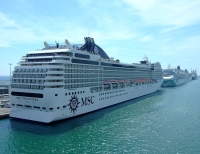 Vueling is bolstering its destinations from Cardiff Airport this summer with the addition of two new destinations, Alicante and Palma (Mallorca). The new scheduled services will commence from 22 June and will be operated by 150-seat Airbus A319 aircraft three times weekly on Tuesdays, Thursdays and Sundays.
Vueling is bolstering its destinations from Cardiff Airport this summer with the addition of two new destinations, Alicante and Palma (Mallorca). The new scheduled services will commence from 22 June and will be operated by 150-seat Airbus A319 aircraft three times weekly on Tuesdays, Thursdays and Sundays.
Last October the airline announced a Cardiff – Barcelona service from March, marking the first direct Vueling service from the UK to the airline’s home base. With Barcelona services will also be Tuesdays, Fridays and Sundays to accommodate the increasing interest in the cruise market from Barcelona. Most cruises set sail on a Saturday so these flights will enable passengers to arrive at a convenient time in order to join their chosen cruise and spend a final night in Barcelona before returning home. On 23 June Southampton – Barcelona will also come on line, linking Europe’s two premier cruise ports.
Passengers to and from both south Wales and a large slice of southern England will also benefit from a wealth of connections available via the Barcelona hub, currently accessing over 40 destinations in Europe and North Africa, with full baggage through check-in to final destination. www.vueling.com
Europe gains Boeing 787 passenger service
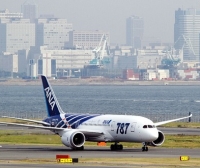 Next Saturday (21 January) ANA, Japan’s largest airline and the launch customer for the Boeing 787 Dreamliner, will introduce the aircraft to Europe with a non-stop 12-hour flight from Tokyo Haneda to Frankfurt.
Next Saturday (21 January) ANA, Japan’s largest airline and the launch customer for the Boeing 787 Dreamliner, will introduce the aircraft to Europe with a non-stop 12-hour flight from Tokyo Haneda to Frankfurt.
The success of the Dreamliner, which entered service with ANA on two domestic routes on 1 November last year, is underlined by the very high number of seats being filled on the routes being flown by the aircraft. Load factors on ANA’s 787 routes to Okayama and Hiroshima have reached approximately 88%, compared to 72.2% for all ANA services operating between Haneda and these two destinations and 67.7% over the same period a year earlier. The airline has 55 Dreamliner’s on order.
The reliability of the 787 has been as impressive as customer demand with 96.3% of scheduled Dreamliner departures having left on time compared to an ANA group average of 96.5% for the same period. www.ana.co.jp
Heathrow hits a new record
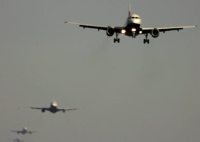 BAA has published its December passenger traffic figures and with it the numbers for the whole year.
BAA has published its December passenger traffic figures and with it the numbers for the whole year.
On the positive side BAA’s airports served 108.5m passengers last year, an increase of 4.4%. December 2011 was Heathrow’s busiest December ever, 5.5m passengers passing through, giving a total for the 12 months of 69.4m surpassing the 67.9m set in 2007, the previous best ever. Record passenger numbers accompanied record efficiency levels with the average aircraft operating with 75.2% of its seats occupied.
On a year to year basis every one of the six airports currently under BAA ownership (Edinburgh is up for sale) saw growth, with the exception of Stansted which, with a 18m passenger throughput, dropped 2.8% making it now only Britain’s fourth busiest gateway after Manchester.
Edinburgh, up for sale, saw record traffic of 9.4m in 2011 beating the previous record set in 2009 (9m).
Results in the international ASQ (American Society for Quality) benchmarking survey showed that 70% of passengers across Heathrow rated their experience at the airport as either ‘excellent’ or ‘very good’, up from 57% in 2008. Last year represented the best punctuality performance in a decade. www.baa.com
Lufthansa's successful biosynthetic fuel trial
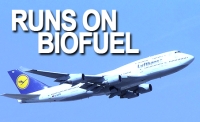 After a six-month practical trial involving biosynthetic fuel, Lufthansa says that the results are positive. In all, 1,187 biofuel flights were operated between Hamburg and Frankfurt. According to initial calculations, CO2 emissions were reduced by 1,471 tonnes.
After a six-month practical trial involving biosynthetic fuel, Lufthansa says that the results are positive. In all, 1,187 biofuel flights were operated between Hamburg and Frankfurt. According to initial calculations, CO2 emissions were reduced by 1,471 tonnes.
"Our burnFAIR project went off smoothly and to our fullest satisfaction. As expected, biofuel proved its worth in daily flight operations," confirmed Joachim Buse, Vice President Aviation Biofuel at Lufthansa, highlighted last week by a Boeing 747-400, carrying about 40 tonnes of a biosynthetic fuel mix, operating Frankfurt to Washington. With this flight alone, Lufthansa reduced CO2 emissions by 38 tonnes, equivalent to the CO2 emissions of six scheduled flights between Frankfurt and Berlin.
The principle behind biofuel is simple and is based on the carbon cycle. Plants withdraw CO2 from the atmosphere through photosynthesis. When aircraft engines burn biofuel, this CO2 is released back into the atmosphere. Biofuel emits about 50% less CO2 than conventional fossil fuels.
"As a next step, we will focus on the suitability, availability, sustainability and certification of raw materials. However, Lufthansa will only continue the practical trial if we are able to secure the volume of sustainable, certified raw materials required in order to maintain routine operations," Project Manager, Joachim Buse, stressed. www.puresky.de
National Ferry Fortnight
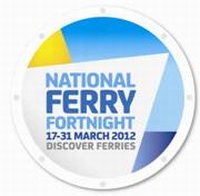 Britain’s annual National Ferry Fortnight has been moved slightly earlier than the traditional May slot (now 17-31 March) to emphasise the great value of family ferry travel at a time when parents have a watchful eye on budgets. Industry body, the Passenger Shipping Association (PSA), has also revealed a new National Ferry Fortnight official logo that will front the campaign. With SeaFrance ‘sinking’ last week (see below) the timing of the announcement was unfortunate.
Britain’s annual National Ferry Fortnight has been moved slightly earlier than the traditional May slot (now 17-31 March) to emphasise the great value of family ferry travel at a time when parents have a watchful eye on budgets. Industry body, the Passenger Shipping Association (PSA), has also revealed a new National Ferry Fortnight official logo that will front the campaign. With SeaFrance ‘sinking’ last week (see below) the timing of the announcement was unfortunate.
The two-week showcase is designed to heighten consumer and media awareness of Britain’s extensive ferry services of over 50 routes. Some 35m people, 8m cars and 140,000 coaches were carried by ferries in 2011.
Central to the campaign will be a series of promotional offers on ferry routes to the Continent, Ireland and within the UK. The National Ferry Fortnight logo will be featured on many ferry members’ own advertising and website campaigns, with a press, PR, and social media push led by the PSA. www.discoverferries.com
Scottish referendum could cause APD dilemma
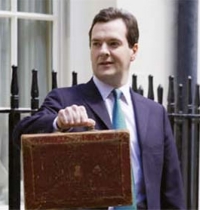 The possibility of Scotland leaving the United Kingdom could set up some interesting tax situations, in particular with regard to APD (Air Passenger Duty).
The possibility of Scotland leaving the United Kingdom could set up some interesting tax situations, in particular with regard to APD (Air Passenger Duty).
The subject was raised last week with First Minister Alex Salmond suggesting a referendum in 2014 and British Prime Minister David Cameron hinting at 2013.
At present all parts of the UK pay the same APD with the exception of North Atlantic services from Belfast where the attraction of cheaper tax fees at Dublin has caused the Treasury to back down with much cheaper taxes.
Should Edinburgh introduce lesser rates than England, Newcastle might well ask for a reduction too, passengers attracted to go north to Glasgow for Emirates flights to, say, Sydney. And if Newcastle why not Manchester too. Birmingham would then be sure to apply.
What you are left with is only London paying a premium rate, unpopular with all and a political minefield for the Mayor to tackle. http://customs.hmrc.gov.uk
Travel Technology Europe at Earls Court
 The Business Travel Show at Earls Court (7-8 February) will again be joined by its IT partner, now renamed Travel Technology Europe. It is on track to grow by at least 30%, with 2012 exhibitor numbers already exceeding those of 2011 and visitor registrations ahead of this time last year.
The Business Travel Show at Earls Court (7-8 February) will again be joined by its IT partner, now renamed Travel Technology Europe. It is on track to grow by at least 30%, with 2012 exhibitor numbers already exceeding those of 2011 and visitor registrations ahead of this time last year.
To date, 60 exhibiting companies specialising in a wide range of travel technologies, from booking and reservation systems, network infrastructure and hardware, to mobile, social and web design, are signed up.
The educational programme features global brands at the Travolution Theatre, TTE Travelport Live Theatre and new for 2012, the Business Travel Technology Theatre.
With content powered by the editorial team of Travolution, the presentations focus on the challenges facing the industry today with sessions designed specifically to help delegates drive their business forward and harness the power of travel technology systems. Highlights include two Travolution Question Time sessions – ‘The Threat of Google Flight Search’ and ‘How to Find Growth in a Flat Market’.
Sessions will focus on cloud computing, how to expand overseas, web analytics and data feeds and real-time pricing. www.traveltechnologyshow.com
AND FINALLY: Poor shot
Following the tragic death of the Human Cannonball at the Circus, a spokesman said "We'll struggle to get another man of the same calibre."
COMMENT: High Speed Two
AERBT is in favour of High Speed Two (HS2), the 21st century railway announced in Parliament last week, initially from London Euston to a point north of Birmingham, and once built splitting and continuing to Manchester/Scotland and Leeds. It seems to us that a policy of ‘fix and mend’ will only produce a second rate product.
A parallel and comparison can actually be drawn with the M1 motorway and the A1 dual carriageway. The 1960s M1 is a success, and yes it does have problems, but works. The A1 is OK but is essentially what can only be described as a “mish mash”. A journey from say Mill Hill in north London to Doncaster, much the same distance on either road, will take 30 minutes longer via the A1 and, with the roundabouts and traffic lights, be far less economical and eco friendly and more wearing for the people concerned and their vehicles.
Likewise HS2 will offer the latest technology whilst some sort of upgrade for the present Victorian concept will at the best be a compromise. We accept that some people and communities will experience problems, but they (and everyone else) will suffer even more if the country declines over the next half century due to poor transport infrastructure.
For once the Government has grasped the state of affairs, but it still has not recognised the even more serious situation regarding air transport and the position of Great Britain globally in terms of trade and commerce. We are in serious danger of falling dramatically behind unless we get our act together. Next week AERBT intends to publish some figures which highlight the situation today, and not in 10 years’ time.
Justine Greening, the new Transport Secretary, is more than happy to promote 143 miles of railway, every metre of which is bound to cause controversy. Yet a simple one mile runway on land that as far back as 1944 was designated for use as an airfield is anathema to her. Politics!
AERBT will continue to support Heathrow’s third runway (and a lifting of limits that restrict an easy increase of say 20% over current capacity). We will also bang the drum to promote the proper commercial use of RAF Northolt (NHT), but not as a connecting airport. AERBT sees NHT as a London City in the west, a gateway to the nation’s capital from the provinces and regional European points. Certainly in the short and medium term as HS2 is built. It meets the political statement “no new runways in the South East”, is a plus in terms of revenue for the Treasury (RAF Northolt is a minus), and provides more slots and flexibility for Heathrow itself.
Yes, there will be opposition (but more income for the local council and employment), NATS will want to have a say (at Los Angeles the runway separation is infinitely less), and the Air Marshals will shout (they always do).
The Times in a leader last Friday (13 January) put the case for Heathrow’s third runway admirably. In our opinion the same goes for Northolt. “The wellbeing of the few cannot hold sway over the wellbeing of the nation.”
Malcolm Ginsberg
Editor in Chief
Dublin gains Emirates
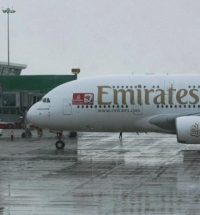 Emirates launched its new daily Dublin route last week. It competes with Etihad, currently operating a 10 times a week service between its home base of Abu Dhabi – just an hour's drive from Dubai – and Dublin. Both airlines operate Airbus A330 aircraft, but Emirates is the only carrier offering First Class. Flight time is around 7hrs 30mins. The carriers are emphasising connections to Australasia, India and the Far East.
Emirates launched its new daily Dublin route last week. It competes with Etihad, currently operating a 10 times a week service between its home base of Abu Dhabi – just an hour's drive from Dubai – and Dublin. Both airlines operate Airbus A330 aircraft, but Emirates is the only carrier offering First Class. Flight time is around 7hrs 30mins. The carriers are emphasising connections to Australasia, India and the Far East.
This is the third new route to be added to Emirates route network in the opening days of 2012. After the launch of Rio de Janeiro (Brazil) and Buenos Aires (Argentina) on 3 January, the Irish capital took its position as Emirates 118th destination from Dubai.
Ireland has a population of around 4.5m. Around 5,000 Irish nationals live in the UAE and approximately 80,000 in Australia, which is a key market. More than 70 passengers on the 237-seat inaugural flight came from bookings in Australia.
Along with the new routes to Dublin, Rio and Buenos Aires, Emirates will start flights to Lusaka and Harare on 1 February, Dallas from 2 February, Seattle effective 1 March, and Ho Chi Minh City from 4 June 2012. www.emirates.com www.etihad.com
Gatwick grows but loses Air Asia X
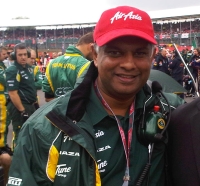 Air Asia X is to pull out of Gatwick at the end of March. Higher fuel prices, increased APD (Air Passenger Duty) and European emission costs have been put down as the reasons but poor established marketing might have played a role in the route’s demise. It is a setback for Tony Fernandes whose Air Asia has up to date only seen growth. He is now also the owner of Queens Park Rangers soccer team, which is in the Premier League relegation zone. It is the forth failure in recent times of an ex-UK specialist long haul airline. Air Asia X is also dropping Paris, Delhi and Mumbai.
Air Asia X is to pull out of Gatwick at the end of March. Higher fuel prices, increased APD (Air Passenger Duty) and European emission costs have been put down as the reasons but poor established marketing might have played a role in the route’s demise. It is a setback for Tony Fernandes whose Air Asia has up to date only seen growth. He is now also the owner of Queens Park Rangers soccer team, which is in the Premier League relegation zone. It is the forth failure in recent times of an ex-UK specialist long haul airline. Air Asia X is also dropping Paris, Delhi and Mumbai.
On the plus side, Gatwick says it has had a very positive 12 months with passenger numbers up 7.3% to 33.6m, whilst short of the record 2007 figure of 35.2m, still is extremely good and going in the right direction. The airport achieved record average load factors of 76.4%, up 2.9 percentage points on the previous year.
Also very much on the plus side was the completion of another stage in the rebuilding of the North Terminal making it far more ‘user friendly’ from a passenger arrival/departure point of view, landside. www.gatwickairport.com
High Speed Two on its way
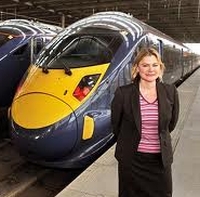 Britain will have a national high-speed rail network providing vital new capacity and faster journeys across the country from 2026, Transport Secretary Justine Greening has announced.
Britain will have a national high-speed rail network providing vital new capacity and faster journeys across the country from 2026, Transport Secretary Justine Greening has announced.
Called HS2 (High Speed Two) it will be a Y-shaped operation with stations in London, Birmingham, Leeds, Manchester, Sheffield and the East Midlands linked by high-speed trains conveying up to 26,000 people each hour at speeds of up to 250mph.
These ‘super trains’ will also connect with the existing West Coast and East Coast main lines to serve passengers beyond the HS2 network in Edinburgh, Glasgow, Newcastle, Durham, York, Darlington, Liverpool, Preston, Wigan and Lancaster.
HS2 will be built in two phases. The first will see construction of a new 140-mile line between London and Birmingham by 2026. The second phase will see lines built from Birmingham to Leeds and Manchester by 2033. A formal consultation on second phase routes will begin in early 2014 with a final route chosen by the end of 2014.
The first phase of HS2 will include a connection to Europe via the Channel Tunnel. On completion the network will include a direct link to Heathrow. www.hs2.org.uk
Malev future not assured
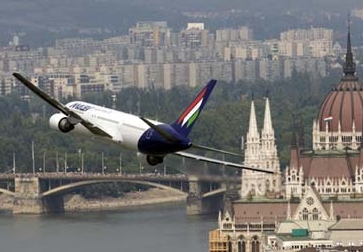 Hungarian airline Malev may become the first airline casualty of the European economic crisis. The national carrier, now state-controlled, is waiting the result of a cabinet meeting later today (16 January) to know if it has a future, certainly in its present set-up. What is clearly obvious it that the ratings agency crisis, announced last Friday, will turn ministers’ attention to even more vital country interests. Malev is a member of oneworld.
Hungarian airline Malev may become the first airline casualty of the European economic crisis. The national carrier, now state-controlled, is waiting the result of a cabinet meeting later today (16 January) to know if it has a future, certainly in its present set-up. What is clearly obvious it that the ratings agency crisis, announced last Friday, will turn ministers’ attention to even more vital country interests. Malev is a member of oneworld.
The airline depends on state aid to keep operating and was granted another US$21m loan at the end of December. It is trying to quell worries of suppliers and customers by insisting in public statements that normal operations will continue. The country’s Government says it has accepted a European Commission ruling that financing granted to Malev in 2007-10 “constitutes illegal state aid.”
Question marks must hang over other central European carriers including Air Baltic, CSA Czech Airlines and LOT Polish Airlines which have been kept afloat by their respective governments.
The International Air Transport Association (IATA) expects European carriers to post a combined loss of US$600m in 2012. Based on estimates, they made a profit of US$1bn in 2011, a 1.2% margin. www.malev.hu
P&O solo on short sea crossing
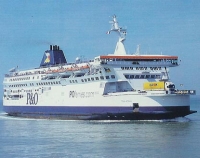 SeaFrance, the French cross Channel operator has finally folded after not operating for nearly two months. This gives P&O a monopoly on the Dover – Calais route although DFDS Seaways offers an alternative via Dunkirk. The operation is a ‘hot potato’ in France with nearly 1,000 jobs lost at what is effectively a state-run operation and French Presidential elections due in four months’ time. SeaFrance has not been helped by a staffing attitude that has meant regular strikes and a loss of confidence by the travelling public.
SeaFrance, the French cross Channel operator has finally folded after not operating for nearly two months. This gives P&O a monopoly on the Dover – Calais route although DFDS Seaways offers an alternative via Dunkirk. The operation is a ‘hot potato’ in France with nearly 1,000 jobs lost at what is effectively a state-run operation and French Presidential elections due in four months’ time. SeaFrance has not been helped by a staffing attitude that has meant regular strikes and a loss of confidence by the travelling public.
P&O now reigns supreme on a route that has seen much change (and many operators) over the last 50 years including hovercraft and the emergence of the Channel tunnel.
SeaFrance has four ferries suitable for the route. As AERBT closes for publication it is not clear if these will find a friendly home (that is brought back into service with a new operator) or disposed of. www.poferries.com
SriLankan Airlines recommences services to Zurich
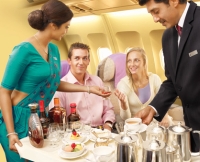 Following the introduction of services to Shanghai, Guangzhou, Kochi and Moscow last year SriLankan Airlines has recommenced twice weekly flights to Zurich. The Swiss financial capital was served by Sri Lanka's national carrier for a quarter of a century from 1980, but flights were suspended in 2005 during a global slump in air travel.
Following the introduction of services to Shanghai, Guangzhou, Kochi and Moscow last year SriLankan Airlines has recommenced twice weekly flights to Zurich. The Swiss financial capital was served by Sri Lanka's national carrier for a quarter of a century from 1980, but flights were suspended in 2005 during a global slump in air travel.
Under the enthusiastic Chairmanship of Nishantha Wickremasinghe the airline is looking in a positive mood towards the future and further new destinations can be expected. SriLankan currently serves 61 destinations in 34 countries. It is the only airline on the Heathrow – Colombo route.
The civil war in Sri Lanka is now history and the country, once one of the world’s great tourist havens, is again aggressively tackling the leisure market.
It was back in 1998 that the airline changed its name from Air Lanka, and in March 2008 did not renew a management contract with Emirates. Today it operates six A340-300 aircraft, six A330-200/243s and six A320-200s plus a pair of de Havilland Twin Otters under the SriLankan Air Taxi banner which fly from Beira Lake, Columbo, to a variety of water sites around the country. Colombo is a popular gateway to Male and the Maldives. www.srilankan.com
ON TOUR: The Delta Airlines museum
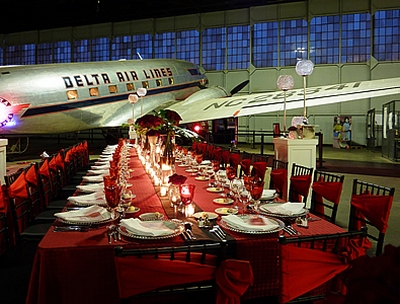 Incorporated in last week’s ON TOUR “Speedbird Centre”, British Airways archive at Waterside, was a mention of Delta Airlines fine museum at Atlanta Hartsfield. Last year your Editor was delighted to be given a short tour. The museum is open to Delta employees and their families, Delta retirees, employees from Delta’s ancestor airlines, and corporate visitors. What defines a corporate visitor is really up to Delta. If you want to visit contact museum.delta@delta.com
Incorporated in last week’s ON TOUR “Speedbird Centre”, British Airways archive at Waterside, was a mention of Delta Airlines fine museum at Atlanta Hartsfield. Last year your Editor was delighted to be given a short tour. The museum is open to Delta employees and their families, Delta retirees, employees from Delta’s ancestor airlines, and corporate visitors. What defines a corporate visitor is really up to Delta. If you want to visit contact museum.delta@delta.com
Delta Air Service was formed in 1928 with an investors' buyout of Huff Daland Dusters Inc. The airline’s headquarters were in Monroe, Louisiana, until it moved to Atlanta, Georgia, in 1941. The carrier changed its name to Delta Air Lines in 1945.
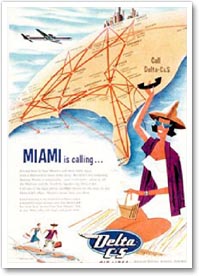 In 1990, a group of Delta retirees launched an effort to locate one of Delta's first 1940s Douglas DC-3 aircraft. This combined with an effort to consolidate Delta's memorabilia and archival collections, created a groundswell of support that expanded into a museum. Today it survives with volunteer assistance and charity donations.
In 1990, a group of Delta retirees launched an effort to locate one of Delta's first 1940s Douglas DC-3 aircraft. This combined with an effort to consolidate Delta's memorabilia and archival collections, created a groundswell of support that expanded into a museum. Today it survives with volunteer assistance and charity donations.
On 23 May 1995, the Delta Air Transport Heritage Museum Inc, was incorporated as an independent non-profit corporation. It is devoted to collecting and preserving the history and heritage of Delta Air Lines and all of the airlines that have merged with Delta in the past. This includes Chicago & Southern Air Lines (1953), Northeast Airlines (1972), Western Airlines (1987), Northwest Airlines (2008), and much information about the acquisition of Pan Am's transatlantic and shuttle routes (1991), arguably a takeover.
The museum is housed in a pair of hangars that date back to the 1940s and were the airline’s maintenance and engineering base until 1960. The carrier’s press and public affairs office sits adjacent to the buildings.
Hangar 1 houses the prototype Lockheed L-1011 Tristar and its Rolls-Royce RB 211 engines. The aircraft was purchased from the Walt Disney Corporation and cut down to just the cockpit and early 1970s First Class cabin. The cockpit is fully lit with all controls still movable. The cabin is also a museum stop where Delta memorabilia can be purchased.
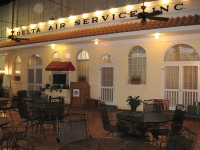 Also in Hangar One is the Monroe Café, a full scale replica of Delta's former Monroe, Louisiana, building. It served as Delta's headquarters from 1934 to 1941 and is now also used as a meeting and dining establishment. The "hub" of Hangar One is the Delta Archives. It houses more than 200,000 images, 1,000 films, one of the world's largest airline uniform collections, as well as an aviation reference library.
Also in Hangar One is the Monroe Café, a full scale replica of Delta's former Monroe, Louisiana, building. It served as Delta's headquarters from 1934 to 1941 and is now also used as a meeting and dining establishment. The "hub" of Hangar One is the Delta Archives. It houses more than 200,000 images, 1,000 films, one of the world's largest airline uniform collections, as well as an aviation reference library.
Hangar 1 also houses the museum's restored aircraft which includes Boeing Ship 41, the prize of the Delta museum, which is Delta's first DC-3. Also on display is a 1931 Travel Air 6000, symbolizing the airline's first passenger aircraft. Restored by volunteers and a core mechanic team from 1993-1999, in 2001 it became the original aircraft to be honoured with the National Trust for Historic Preservation award. On show also is a 1936 Stinson Reliant SE. Nicknamed the “Gull Wing,” this unique aircraft served as an instrument trainer for Northeast Airlines pilots in 1941-1942.
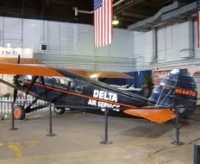 Hangar Two is home to The Spirit of Delta, B-767. Because the tail of Ship 102 was four feet higher than the support beams in the “tail door” of the hangar, a team of structural engineers modified the roof structure in 2006 to allow Spirit to fit.
Hangar Two is home to The Spirit of Delta, B-767. Because the tail of Ship 102 was four feet higher than the support beams in the “tail door” of the hangar, a team of structural engineers modified the roof structure in 2006 to allow Spirit to fit.
The hangar also received a much-needed cosmetic change – a fresh coat of interior paint to bring the hangar back to its original “maintenance grey”. This actual aircraft was repainted in a commemorative paint scheme and toured the United States to celebrate the airline's 75th anniversary in 2004. The aeroplane remained the flagship of the Delta fleet until March 2006, when it was retired and donated by the airline to the museum.
A slow walk around the hangars is a true travel back in time.
Prospective visitors wishing to view specific aircraft should enquire as some exhibits are not always available. www.deltamuseum.org
Boeing wins Air France-KLM order
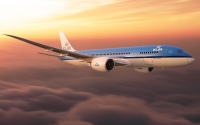 Air France-KLM Group has finalized an order for 25 Boeing 787-9 Dreamliners, plus options, first announced last October. As of today (16 January 2012) the Chicago-headquartered company has mustered 860 firm bookings for the 787 and delivered three.
Air France-KLM Group has finalized an order for 25 Boeing 787-9 Dreamliners, plus options, first announced last October. As of today (16 January 2012) the Chicago-headquartered company has mustered 860 firm bookings for the 787 and delivered three.
"By making the 787 a key part of its fleet renewal, Air France-KLM strengthens its position as a worldwide leader," said Jim Albaugh, President and CEO of Boeing Commercial Airplanes. "Reaction to the Dreamliner's entry into service has been phenomenal and we look forward to seeing passengers of Air France-KLM fly on this revolutionary airplane."
The Boeing 787-9 Dreamliner is a slightly larger version of the 787-8 and will carry 250-290 passengers on routes of 8,000 to 8,500 nautical miles (14,800 to 15,750km). The plane uses 20% less fuel than today's similarly sized aircraft and operates at around Mach 0.85, making it slightly quicker, a useful bonus on routes that can be up to 14 hours. Two-thirds of 787 orders are for the 787-8. www.boeing.com/commercial
Etihad Airways figures for 2011
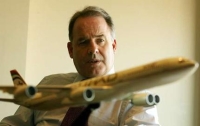 Based in Abu Dhabi Etihad Airways, the national airline of the United Arab Emirates, carried a record 8.29m passengers in 2011, a 17% increase on the previous year.
Based in Abu Dhabi Etihad Airways, the national airline of the United Arab Emirates, carried a record 8.29m passengers in 2011, a 17% increase on the previous year.
“This result, achieved while much of the world was still very much in the economic doldrums and oil prices remained high, is testament to our emergence as a formidable force in the international aviation arena,” noted the airline's President and Chief Executive Officer, James Hogan.
“It also reflects our commitment to sensible, strategic expansion which is why we launched eight new routes last year,” he said. “These were to Bangalore, the Maldives, the Seychelles, Chengdu, Dusseldorf, Tripoli, Shanghai and Nairobi.”
Etihad Airways busiest route was Bangkok with the airline carrying just over 500,000k passengers to and from the Thai capital during the year in spite of various problems in the city. This was closely followed by London at 479k. The airline carried 269k between Abu Dhabi and Sydney, 237k on the Frankfurt route, 228k Paris, 222k Manchester and 214k Dublin.
“We launched freighter services into Amsterdam, Cairo, Djibouti, Kabul and Kandahar during the year, increased operations to our key markets of China and India while growing Johannesburg by up to three freighters a week.” www.etihad.com
Great Britain wins in New York
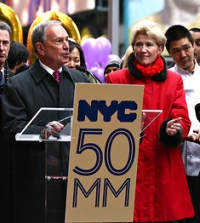 Never a city to do things by half, New York just before Christmas celebrated its 50 millionth visitor with Mayor Bloomberg doing the honours in Times Square. Keen readers will note that your Editor happened to be in the city that never sleeps at that time.
Never a city to do things by half, New York just before Christmas celebrated its 50 millionth visitor with Mayor Bloomberg doing the honours in Times Square. Keen readers will note that your Editor happened to be in the city that never sleeps at that time.
Responsible for marketing what was the very first capital of the United States NYC & Company have confirmed that the city attracted a record-breaking 10.1m international guests in 2011, a 4% rise over 2010. The United Kingdom, is the top market of origin for overseas visitors with more than one million holiday travellers – a 2% increase on 2010. New York City domestic visitors totalled 40.1m, a 2.9% increase over last year. In monetary terms this represents US$32bn in spending.
New York City continues to hold its position as the number one port of entry for the US and the number one US destination for overseas travel with approximately one out of every three visitors to the US visiting its five boroughs. Since 2006, New York City has continued to increase its market share for all inbound international travel to the US growing from a 28% market share to a nearly 33% market share for 2010. www.nycgo.com
London Mayfair corporate jet showroom
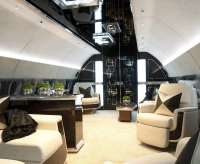 The Jet Business, the world’s first corporate aviation showroom for business jet aircraft, has just opened at One Grosvenor Place, Belgravia, London. Ultra High Net Worth Individuals, government officials, royalty and influential corporate executives living in the capital or visiting from overseas can, by appointment only, plan their business jet sale or purchase with experts and analysts in complete privacy.
The Jet Business, the world’s first corporate aviation showroom for business jet aircraft, has just opened at One Grosvenor Place, Belgravia, London. Ultra High Net Worth Individuals, government officials, royalty and influential corporate executives living in the capital or visiting from overseas can, by appointment only, plan their business jet sale or purchase with experts and analysts in complete privacy.
Centrepiece of The Jet Business showroom is a full size fuselage of a large corporate jet. Before entering it, clients are greeted with floor to ceiling screens running the length of the showroom. Beyond the showroom entrance and fuselage is a boardroom and a private meeting room. Following this is the trading floor environment for the sales team with individual desks modelled on the corporate jet cockpits of carbon fibre with the dashboards and seats upholstered in the same leathers as in Maseratis and Bentleys.
The brainchild of The Jet Business is Steve Varsano, who brings three decades of global experience brokering aircraft. Since 1980 he has been involved with more than 300 aircraft transactions with a combined value of over US$3bn, representing both buyers and purchasers. He is a graduate from Embry Riddle Aeronautical University. www.thejetbusiness.com
More south-east runways required says CAA
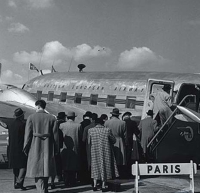 Britain’s Civil Aviation Authority (CAA), a quasi government body, is the latest organisation of influence to state that the UK requires additional runway capacity in the south-east. In a report published last Tuesday (9 January) the chief aviation regulator has come down firmly for an increase.
Britain’s Civil Aviation Authority (CAA), a quasi government body, is the latest organisation of influence to state that the UK requires additional runway capacity in the south-east. In a report published last Tuesday (9 January) the chief aviation regulator has come down firmly for an increase.
Andrew Haines, CAA Chief Executive, said: “Additional capacity would offer significant benefits for consumers, and for the UK as a whole, so long as it is delivered in an environmentally sustainable way.”
With the government’s stated policy of ‘no new runways’ this authority’s report will add to the pressure on Downing Street for a more positive medium-term aviation policy, any Thames estuary project a long way off. The spring aviation review may well include a reference to RAF Northolt, the existing one time commercial airport in the London suburbs north of Heathrow. Another possible way out for government is to increase both Heathrow movements and throughput by the so-called ‘mixed mode’ use of the current two runways and a policy compelling airlines to increase the average capacity of the equipment they are using. www.caa.co.uk
Record numbers for Lufthansa Group
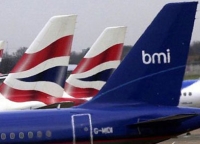 The airlines that make up the Lufthansa Group carried a record number of passengers in 2011. A total of 106.3m passengers chose to fly with Lufthansa, SWISS, Austrian Airlines, Germanwings and departing bmi. This is equivalent to growth of 7.5% compared with the previous year. The Group increased its capacity by 9.8% overall in 2011, while its revenue seat kilometres rose by 7%. The average passenger load factor for the aircraft correspondingly fell by two percentage points to 77.2%.
The airlines that make up the Lufthansa Group carried a record number of passengers in 2011. A total of 106.3m passengers chose to fly with Lufthansa, SWISS, Austrian Airlines, Germanwings and departing bmi. This is equivalent to growth of 7.5% compared with the previous year. The Group increased its capacity by 9.8% overall in 2011, while its revenue seat kilometres rose by 7%. The average passenger load factor for the aircraft correspondingly fell by two percentage points to 77.2%.
The trend of decreasing sales that emerged in autumn continued in the remaining months of the year. The carrier said in a statement that Group-wide it proved not possible to match the level of growth recorded at start of the year.
In October the airline posted a 21% decline in net profits for the previous quarter. bmi is thought to be haemorrhaging money, hence the speed of the BA deal. Whether the company will make the full-year operating profit in the "upper end of the three-digit million-euro range" previously expected is likely to prove not obtainable.
The company said that for next year, Lufthansa has lowered its planned passenger-capacity growth to 3%, compared with a 9% increase previously expected. www.lufthansa.com
Toronto City to Washington Dulles
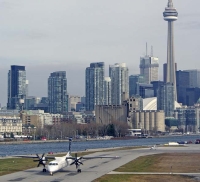 Porter Airlines remarkable growth at Toronto City Airport continues with the announcement of a three times daily service to Washington Dulles starting 16 April. It will be the Canadian carrier’s sixth US destination. Block time, that is the time from gate to gate, is just 90 minutes, about 10 minutes quicker than many of the scheduled offerings from Toronto’s Pearson International Airport. This is due to the fact that aircraft at the downtown airport have very quick runway accessibility, a great saving on time and fuel.
Porter Airlines remarkable growth at Toronto City Airport continues with the announcement of a three times daily service to Washington Dulles starting 16 April. It will be the Canadian carrier’s sixth US destination. Block time, that is the time from gate to gate, is just 90 minutes, about 10 minutes quicker than many of the scheduled offerings from Toronto’s Pearson International Airport. This is due to the fact that aircraft at the downtown airport have very quick runway accessibility, a great saving on time and fuel.
Porter Airlines made its maiden flight in October 2006 and now operates 26 Bombardier Q400 aircraft. With Washington it will serve 19 airports in Canada and the United States from the airport, which sits on an island in Lake Ontario, and is connected to the mainland by a ferry. It is then five minutes from the city centre.
With the new service the airline points out that it is keen to attract linking traffic both north and southbound.
Subject to financial decisions over the coming months the Toronto Port Authority is pushing ahead with a pedestrian tunnel with construction due to start in winter 2012 and a targeted completion date of spring 2014. www.flyporter.com
MOTORING UPDATE by Ted Wilkinson
VW Golf Cabriolet SE Blue Motion 1.6 TDI
New Golf Cabriolet – An Icon Returns!
Welcome back Golf Cabriolet See the motoring index
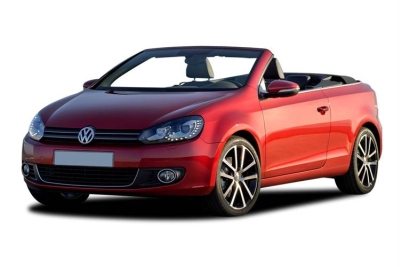 It was a sad day in 2002 when the effervescent Volkswagen Golf Cabriolet disappeared from the showrooms. Wolfsburg has still catered for the fresh air enthusiasts in the intervening years with the soft top Beetle and the drop head Eos but diehards, me included, claim there is nothing like a Cabriolet. Since the first was launched back in 1979 it has been a car that has been treasured by probably the widest customer profile, young and old, rich and not so rich, and men and women alike.
It was a sad day in 2002 when the effervescent Volkswagen Golf Cabriolet disappeared from the showrooms. Wolfsburg has still catered for the fresh air enthusiasts in the intervening years with the soft top Beetle and the drop head Eos but diehards, me included, claim there is nothing like a Cabriolet. Since the first was launched back in 1979 it has been a car that has been treasured by probably the widest customer profile, young and old, rich and not so rich, and men and women alike.
In the intervening years the motor car world has moved on a pace with the introduction of new technologies to create more fuel efficient and cleaner emitting engines, far greater safety and ever higher standards of production.
The first notable sign is the engine line up. 1.2 /1.4 litre petrol engines and 1.6/2.0 turbo diesels. A sage choice rather than an appeal to the sporty minded driver I would suggest though the line-up has strong reputations in other Volkswagen models for both potency, frugality and cleanliness.
Importantly, Volkswagen has stayed true to the Golf Cabriolet concept, basing the model on a two-door version of the Golf hatch back and retaining a conventional soft top, albeit triple skinned for greater weather and noise protection and provided with easy to use electric operation. History shows that Volkswagen did its homework years ago when it decided to offer the drophead, placing production with the expertise of the Karmann Ghia factory in Osnabruck, a company famed for creating soft top cars based on mainstream models. So successful was the arrangement that Volkswagen bought the factory. All Golf Cabriolets, including this model, have been sourced from there.
I always believe the way to test a soft top car is in bad weather, preferably winter, as that is the real test of the hood’s capabilities. Easy to chop off a metal roof but putting it back with pieces of fabric that can deal successfully with the elements is a real challenge – not to mention maintaining body rigidity.
There are three layers of fabric used on this car’s roof, the rear window is glass and has an electric demister and the operation is easy switching with automatic latching and, according to Volkswagen, takes a mere 9.5 seconds.
In creating this Cabriolet the designers have also ensured a great deal of practicality by stowing the folded hood in a separate compartment on the top of the boot rather than in the boot area, thus ensuring a boot capacity similar to a hatch back of this size. Admittedly the boot lid is relatively small, as is the load aperture. More load capacity can be achieved by folding one or both rear seats flat.
The stowed hood remains visible and looks what it is, a folded piece of canvas material, admittedly good quality but the bonus is that the rear seat space is more or less preserved to a size that justifies the four seat description.
Thus, it may not be the most stylistic Cabriolet on the planet but it is functional and that is what Golf Cabriolets are expected to be.
Many moons ago Volkswagen showed me a concept diesel-powered Golf Cabriolet at the Geneva Motor Show but it certainly never saw the light of day, probably for image reasons. How times have changed! My test car was powered by a 1.6-litre turbo diesel engine.
Admittedly it develops 105 PS or 103.5 bhp and produced a quiet engine note, revved up to about 4,000 rpm in a smooth manner and provided enjoyable rather than totally sporting performance via a positive changing five-speed gearbox.
Volkswagen claim a top speed of 117 mph with 62 mph from rest in 12.1 seconds which is more than acceptable for this type/size of car if it is to score with a wide customer base. The real story is a combined fuel consumption figure of a massive 64.2 mpg which meant that the fuel gauge seemed very reluctant to budge for ages. Economy is also aided by the proved Stop+Start system and by Volkswagen’s now familiar BlueMotion energy efficiency treatment.
Slip into this worthy representative of the Volkswagen brand and it gives the impression of a quality made product worthy of its price tag (it is zero rated for road tax), the smart fascia layout and interior trim reminiscent of the mainstream Golf, the ergonomically efficient and comfortable driving position inviting one to spend a lot of time driving for the sake of driving.
It is an easy driving car, with light positive steering, a good ride with no notable body shake either with roof up or down, smoothly efficient braking, good vision in open top form, not so good with the roof up and sufficiently aerodynamically efficient not to make much mess of one’s hair.
It seems a touch noisier than the metal topped Golf but I found listening to the excellent audio or in discussion with my passenger was not a problem even at motorway pace. The standard fit cruise control also proved useful when dealing with speed limitations.
Volkswagen build them well and they kit them out well. A few items on the standard menu of this SE specification mode: six airbags, rollover protection system, hill hold function wind deflector, parking sensors, automatic lighting six-speaker audio system with MP3/CD/USB, alloy wheels with SpaceSaver spare wheel, green tinted glass, powered mirrors and windows, multifunction leather covered steering and so much more.
If history is repeated with this latest Golf Cabriolet then there will be people lusting after it, attempting to find excuses perhaps to justify owning one. It might be the only car, it might just come as a reward or it might be a retirement car. Without doubt it will be coveted!
Rivals include: Audi A3 Cabriolet, Peugeot 308 CC, Renault Megane CC, BMW 1 Series Convertible, Audi A3 Cabriolet.
Performance 9
Handling 9
Transmission 9
Noise 8
Economy 9
Ride and Comfort 9
Accommodation 9
Styling 8
Brakes 9
Finish 9
TOTAL: 88 %
Price from: £23,245
NOTES FROM TED WILKINSON’S MOTORING DIARY
DoT: From 1 January disabled drivers are being issued with new harder to forge Blue Badges incorporating a holoscene image and a digital photo. Blue Badge fraud is reported to cost the country £46m a year. www.dft.gov.uk/
MAZDA: A revised version of the Mazda3 model has been launched as a strongly attractive cost-saver for fleet users. Developments include a 3.5% reduction in CO2 emissions, better fuel consumption that combine combines to lower excise duty and petrol bills. www.mazda.co.uk
NISSAN: The British designed and built Qashqai model has been voted the What Car? Magazine’s Used Car of the Year. www.nissan.co.uk
KIA: The rapidly expanding Korean Kia car company has announced an all-electric model, the Ray EV that is claimed to have a range of 86 miles and a rapid 25-minute recharge facility. A special satellite navigation system advises of nearest re-charge facilities. 2012 will see 2,500 examples being evaluated by government agencies. www.kia.co.uk
ROLLS-ROYCE MOTOR CARS reported the best annual sales in its history, led by booming demand for its luxury limousines in China. The UK car brand, which is owned by Germany’s BMW, reported that it delivered 3,538 cars to customers in 2011, a 31% rise on the 2,711 it sold the previous year. The carmaker, which employs about 1,000 people and is based in Goodwood, said that China was its biggest market, followed by the US. www.rolls-roycemotorcars.com
JAGUAR’S C-X16 Concept has been recognised by the readers of What Car? as the vehicle they would most like to see launched in 2012. Despite strong competition, the C-X16 Concept emerged as the clear winner. Adrian Hallmark, Global Brand Director, Jaguar Cars and Ian Callum, Director of Design, accepted the Award for the 'Most Exciting Car to be Launched in 2012' from Chas Hallett, Editor-in-Chief of What Car? Magazine.
Chas Hallett commented: 'Whatcar.com is more popular than ever, and its users are kept right up to speed on the latest models. They’ve voted the Jaguar C-X16 as the car they are most excited to see this year, and we share their enthusiasm. The concepts have looked terrific and we’re all looking forward to trying the production version on the road.'
The C-X16 Concept embodies the innovation and relentless focus on engineering efficiency adopted by Jaguar. Its aluminium chassis structure is lighter than the steel alternative and immensely strong while its hybrid drivetrain allows it to accelerate to 62mph from rest in just 4.4-seconds while returning combined economy of 41mpg.
In accepting the Award, Adrian Hallmark commented: 'The C-X16 has received an extraordinary reaction since first appearing in Frankfurt last year – we're proud that the readers of What Car? share our enthusiasm for the Concept by voting in such numbers. I would like to personally thank the readers and recognise the efforts of Ian Callum and our engineers in creating such an inspiring and beautiful sports car.' www.jaguar.com


